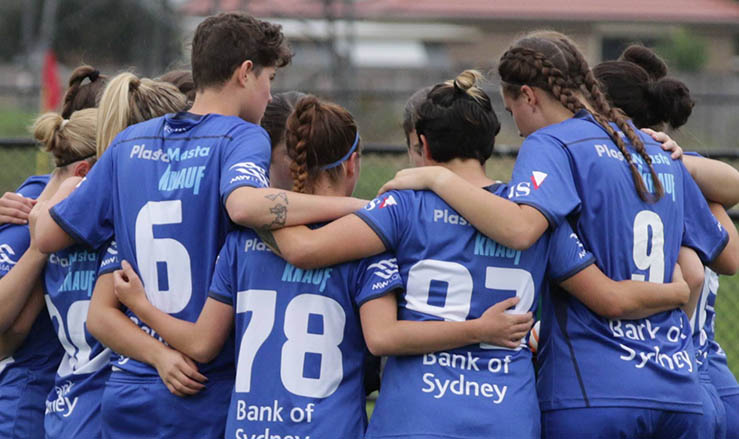Photo: South Melbourne FC
Both divisions of the women’s State League One may be decided this weekend but the path for whoever the eventual champions are could also end up being quite different tales to tell.
Boroondara Eagles have dominated the South-East Division and have gone unbeaten to date. Thanks to a seven-point lead, victory in any one of their last three games will gain them the flag. The first of those opportunities comes against fellow former-WPL club Sandringham SC, themselves one of several successful rebuilding stories this year.
As reported earlier in the season, the Eagles are seeking to mount an inarguable case for any possible expansion berth in the WNPL. Their reserves team is a perfect 13 wins from 13 games, having conceded only 3 goals all year, so the club as a whole has reigned supreme over its South-East opponents.
They look destined for a rematch of the 2015 Grand Final with South Melbourne, albeit in reduced circumstances as both clubs were controversially omitted from the inaugural WNPL competition this year.
South Melbourne, like the Eagles, lost many standout players in the off season but also retained key-stones like Alex Cheal, Natalie Martineau, and Carole Howe. They have needed the experience of these players to navigate a much trickier North-West division.
While South’s currently lead that competition by four points, it must play both second placed South Yarra Lions and third placed University of Melbourne in the remaining rounds.
With a delicious accident of scheduling, the University and South Yarra also play each other one more time, so any one of the three could theoretically emerge in the final month as North-West Division champions.
The first crunch game in the division comes this weekend. A South Melbourne victory over the Lions will put them in an insurmountable lead over the other two clubs. The clash between the league’s most prolific offence (South) and stingiest defence (Lions) makes this a truly enticing matchup, with South’s 1-0 win earlier in the season potentially just the appetiser rather than the whole meal.
Both clubs will see former teammates in the other’s lineup, so points, pride, and prestige will all be on the line in Sunday’s Round 16 matchup. For South Yarra it is a must-win game; a Lions victory would put even more emphasis on the results of the remaining games in this three-way mini-competition within the competition.
The University, Lions, and South also occupy the top three spots in the North-West reserves league, both the first two mentioned also being unbeaten to date. One suspects this relative depth and strength of squads will fuel an intra-division rivalry for as long as all three clubs remain in the same competition.
Of the six clubs who played at the top level last year but were not directly included in the inaugural WNPL season, only one — South Yarra — managed to retain the bulk of their senior squad. Former WPL club Caulfield Cobras was unable to field a reserves team and dropped out completely in 2016, leaving Bundoora United as the only still-troubled former WPL club, facing potential relegation to even lower status next year pending results over the final three weekends.
Like the two current league leaders, Sandringham and Casey Comets have also had to restock their senior ranks, with many of their former players and coaches having moved to the WNPL. Perhaps as a direct result, both have had up-and-down performances in SL1SE during the season.
The surprise packet has of their division has been newly promoted and currently 2nd placed Berwick City, but their prospect of a final-weekend showdown with Boroondara will probably be reduced to a game for pride rather than a title.
Best performed of the newcomers in the North-West has been Eltham Redbacks, with their surprise wins over both South Melbourne and South Yarra in consecutive weeks mid-season helping create the three-way split at the top of the table.
One curiosity in the South-East division is the relatively high positions held in the reserve division by SL1 cellar-dwellers Brighton and Whitehorse. Most observers would expect this to prompt greater player promotion between those squads, but the talent gap between the top division and reserve leagues in the South-East is quite stark.
This lack of depth in strength of squads (the top few clubs aside) might give FFV some pause when it looks back on its decision to expand State League One to 20 clubs in two divisions, and require reserve teams for all. Caulfield’s replacement Doncaster Rovers shockingly dropped out of the competition mid-season, and the late-promoted Yarra Jets have also forfeited reserve games, due to its lack of players to sustain a second team.
One might also question the decision to have no preliminary games to the Grand Final between the respective division winners. The already interesting battles for second place would be greatly enhanced if those clubs in the running also had the enticement of redemption against the leaders of the respective cross-city sister league to follow.

